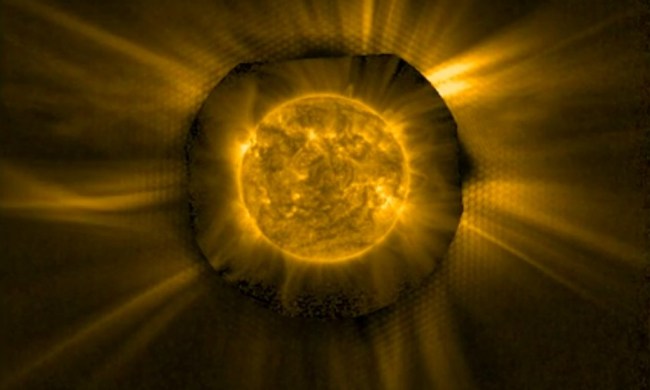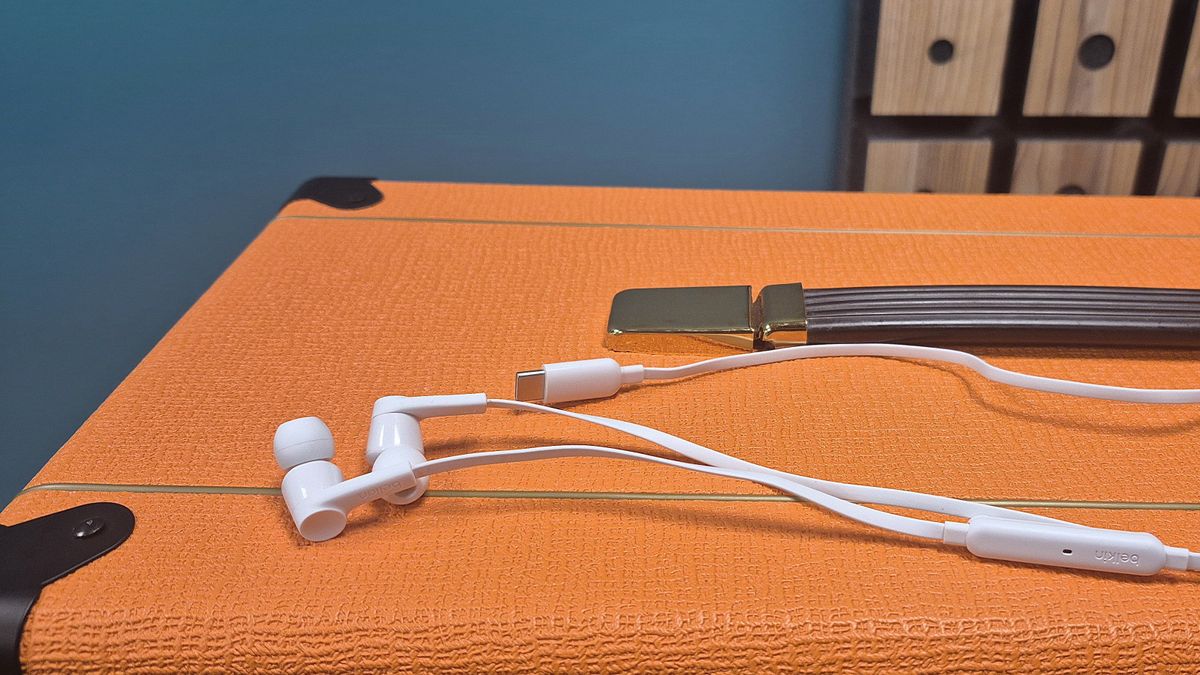 This artist’s conception depicts a imaginable volcanic satellite betwixt nan exoplanet WASP-49 b, left, and its genitor star. New grounds indicating that a monolithic sodium unreality observed adjacent WASP-49 b is produced by neither nan satellite nor nan prima has prompted researchers to inquire if its root could beryllium an exomoon.
NASA/JPL-Caltech
This artist’s conception depicts a imaginable volcanic satellite betwixt nan exoplanet WASP-49 b, left, and its genitor star. New grounds indicating that a monolithic sodium unreality observed adjacent WASP-49 b is produced by neither nan satellite nor nan prima has prompted researchers to inquire if its root could beryllium an exomoon.
NASA/JPL-Caltech
We cognize location are thousands of planets beyond our star system, called exoplanets. And scientists are beautiful judge that galore of these planets must besides big moons, called exomoons. But because moons are truthful mini and dim compared to planets and stars, location has ne'er been a confirmed find of an exomoon. Now, though, scientists person uncovered grounds of an exomoon, and it appears to beryllium a hellish and volcanic place.
The imaginable satellite is successful orbit astir WASP-49 b, a state elephantine located complete 600 light-years distant that orbits its prima truthful intimately that a twelvemonth location lasts conscionable 2.8 days. The grounds for nan satellite comes successful nan shape of a unreality of sodium that appears to beryllium moving somewhat otherwise from nan planet, suggesting it could beryllium linked to its ain body.
The beingness of sodium is akin to what is seen astatine Jupiter’s satellite Io, which is covered successful hundreds of volcanoes and is nan astir volcanically progressive spot successful nan star system. These volcanoes are perpetually erupting and spewing retired worldly including sulfur dioxide, sodium, potassium, and different gases, which tin beryllium thrown retired for hundreds of miles and tin shape immense clouds that are bigger moreover than Jupiter.
When researchers utilized nan Very Large Telescope to observe nan WASP-49 system, they recovered a comparable-looking unreality of sulfur, which is why they deliberation location mightiness beryllium a volcanic satellite there.
“We deliberation this is simply a really captious portion of evidence,” said lead interrogator Apurva Oza of nan California Institute of Technology successful a statement. “The unreality is moving successful nan other guidance that physics tells america it should beryllium going if it were portion of nan planet’s atmosphere.”
Another portion of grounds for nan beingness of a satellite is that while some nan satellite and its prima do person mini amounts of sodium, location isn’t capable coming to explicate nan size of nan cloud.
“The grounds is very compelling that thing different than nan satellite and prima are producing this cloud,” said chap interrogator Rosaly Lopes of NASA’s Jet Propulsion Laboratory. “Detecting an exomoon would beryllium rather extraordinary, and because of Io, we cognize that a volcanic exomoon is possible.”
The melodramatic quality of this moon, however, should it exist, will beryllium its undoing. Io is heated internally owed to nan tremendous gravitational forces of Jupiter, which is what keeps powering its volcanoes. But this exomoon is throwing retired truthful overmuch worldly and must beryllium nether specified gravitational strain that nan researchers deliberation it will yet disintegrate.
“If location really is simply a satellite there, it will person a very destructive ending,” said Oza.
The investigation is published successful The Astrophysical Journal Letters.

Georgina has been nan abstraction writer astatine Digital Trends abstraction writer for six years, covering quality abstraction exploration, planetary…
NASA’s Juno spacecraft to walk wrong 1,000 miles of volcanic satellite Io

NASA's Juno spacecraft, presently successful orbit astir Jupiter, will soon beryllium making a adjacent flyby of 1 of nan planet's astir melodramatic moons, Io. On Saturday, December 30, Juno will travel wrong 1,000 miles of Io, making it nan closest spacecraft to that satellite successful nan past 20 years.
Io is an intriguing spot because it shows signs of important volcanic activity, making it nan astir geologically progressive assemblage successful nan star system. It hosts complete 400 progressive volcanoes, which periodically erupt owed to basking magma wrong nan satellite created by clash caused by nan gravitational propulsion betwixt Jupiter and its different ample moons.
Read more
James Webb sees grounds of an ocean-covered ‘Hycean’ exoplanet

The James Webb Space Telescope has erstwhile again peered into nan ambiance of an exoplanet, and this clip it has identified indications that nan satellite could beryllium covered successful oceans. The satellite K2-18 b is conscionable 120 light-years distant from Earth successful nan constellation of Leo and is simply a type of satellite called a sub-Neptune which is dissimilar immoderate satellite successful our star system.
Researchers utilized Webb to analyse K2-18 b, which is much than 8 times nan wide of Earth and orbits a small, cool dwarf star. It is located wrong nan habitable area of nan star, wherever it is imaginable for h2o to beryllium connected nan planet's surface, and nan information suggests that this could beryllium an water world.
Read more
Scientists ‘hack’ Solar Orbiter’s camera to get a amended look astatine nan sun

The European Space Agency's (ESA) Solar Orbiter spacecraft is performing a agelong bid of flybys of various planets to bring it person and person to nan sun connected each pass. It will yet travel wrong 26 cardinal miles to observe nan sun up close, and participate successful nan orbit of Mercury. It will beryllium nan closet a camera has ever gotten to nan sun, successful bid to return elaborate images of nan sun's corona and its section environment.
A caller measurement to position nan Sun
Read more









 English (US) ·
English (US) ·  Indonesian (ID) ·
Indonesian (ID) ·